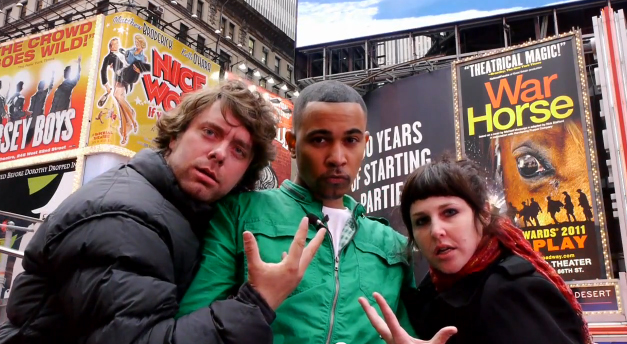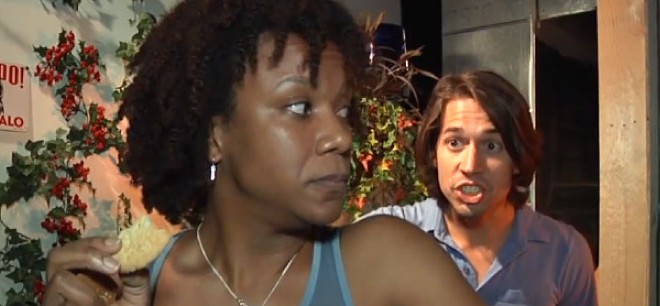They're not just part of your sensible dinner.
“Peas and carrots, carrots and peas, cucumber cucumber, rumble, rumble, murmur murmur…”
What nonsense! That’s exactly the point.
Performers use “peas and carrots” and other gibberish phrases when they want to suggest human speech without actually saying anything meaningful. This practice, called “rhubarb” in the U.K., is useful in a crowd scene. The director might ask the actors for some “peas and carrots” while they are milling about behind the main action. That way, when, say, Marc Antony calls out to the assembled citizens of Rome, “Friends, Romans, countrymen, lend me your ears!”, his co-stars can murmur without distracting from the rest of his speech.
If you’re an actor—and peas and carrots aren’t your favorite dish—then you might prefer other nonsense words like “walla walla,” “watermelon cantaloupe,” and “natter natter” (to which the traditional response is “grommish grommish”).
Another choice is pantomime, mouthing words but not actually making any sound. However, this can seem odd, depending on the style of the production. Or you might improvise whispered phrases of made-up dialogue. The danger is that an audience member might catch something that’s not in the script.
The nice thing about stock phrases like “rhubarb rhubarb” and “peas and carrots” is that you don’t have to think about what to say. Then again, it’s also an opportunity to be subtly creative. If you were a theatrical extra in a group scene, what words or phrases would you repeat?
Oh, and if “peas and carrots” and its cousins sound like vocal exercises from an acting class, that’s no coincidence. One reason to practice repeating certain word combinations is to loosen and strengthen the muscles of your mouth and tongue. Get your lips and jawbone working and it looks like you’re speaking, even if you keep the volume low. Seeing the actors’ mouths moving vigorously can help create the visual illusion of speech.
—Ben Pesner
This video was made by Theatre Development Fund, and it was filmed on location at Soho Rep.
Here’s the team:

